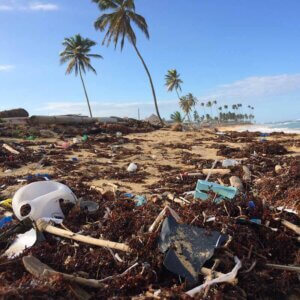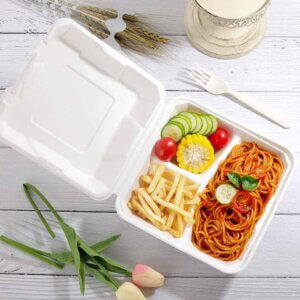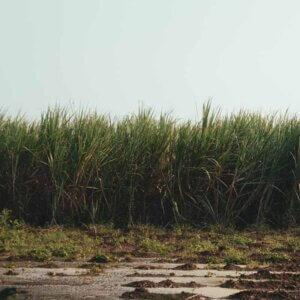The Environmental Impact of Traditional Packaging
Plastic packaging harms the environment through pollution, resource depletion, and wildlife impact. Embracing sustainable alternatives reduces waste, conserves resources, and meets consumer demand for eco-friendly options.
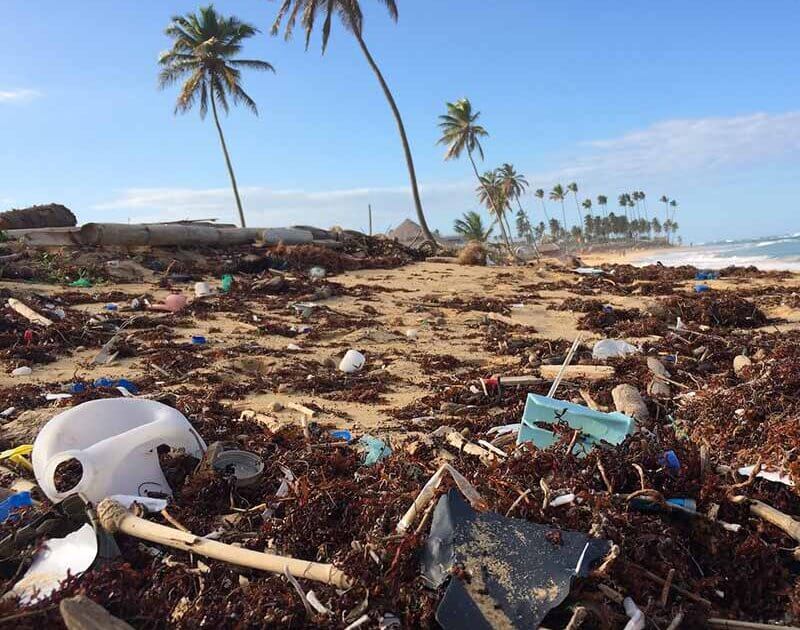
Discuss the negative consequences of plastic packaging
Plastic packaging, which has been widely used for decades, poses significant environmental challenges. Here are some of the negative consequences associated with plastic packaging:
Plastic pollution: Plastic packaging contributes to the global plastic pollution crisis. It is estimated that millions of tons of plastic waste end up in our oceans each year, harming marine life and ecosystems. Plastics do not readily biodegrade, and instead, they break down into smaller particles, known as microplastics, which can persist in the environment for hundreds of years.
Resource depletion: The production of plastic packaging relies heavily on fossil fuels, particularly in the form of petrochemicals. This reliance on non-renewable resources depletes valuable energy sources and contributes to greenhouse gas emissions and climate change.
Landfill waste: Plastic packaging often ends up in landfills, where it occupies valuable space and takes an incredibly long time to decompose. This not only contributes to the growing waste problem but also leads to the release of harmful chemicals as plastics break down over time.
Impact on wildlife: Wildlife is significantly affected by plastic packaging. Animals can mistake plastic items for food, leading to ingestion and entanglement, which can result in injury, suffocation, and death. The presence of plastic waste in ecosystems disrupts the natural balance and threatens biodiversity.
Highlight the need for sustainable alternatives
Given the detrimental environmental consequences of traditional packaging, there is an urgent need to shift towards sustainable alternatives. Here are some reasons why sustainable packaging is crucial:
Waste reduction: Sustainable packaging aims to minimize waste generation by utilizing materials that are biodegradable, compostable, or recyclable. This approach reduces the amount of packaging that ends up in landfills or as litter, ultimately decreasing the environmental burden.
Resource conservation: Sustainable packaging solutions focus on utilizing renewable resources and minimizing the consumption of finite resources. By choosing materials that can be replenished, such as plant-based fibers or recycled materials, we can reduce the strain on natural resources and promote long-term sustainability.
Energy and emissions reduction: Sustainable packaging options often have a lower carbon footprint compared to traditional packaging. By using materials that require less energy and emit fewer greenhouse gases during production, we can mitigate climate change and contribute to a greener future.
Consumer demand and corporate responsibility: Increasingly, consumers are becoming more conscious of their environmental impact and are actively seeking out sustainable products and packaging. Businesses that prioritize sustainable packaging can meet consumer expectations, enhance brand reputation, and demonstrate corporate responsibility.
Introducing Sugarcane Clamshell Containers
Sugarcane clamshell containers are sustainable, biodegradable, and made from renewable bagasse. They reduce waste and offer functional design, insulation, and versatility for eco-friendly packaging.
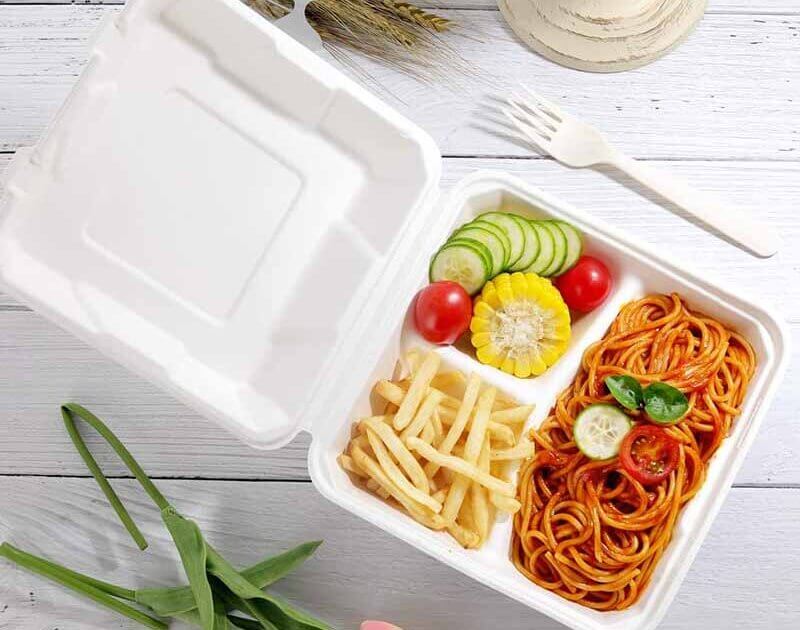
Overview of sugarcane fiber and bagasse as renewable resources
Sugarcane is a tall perennial grass that is primarily grown for sugar production. However, the production of sugar also generates a byproduct called bagasse. Bagasse refers to the fibrous residue left behind after extracting juice from the sugarcane stalks. This fibrous material is commonly used as a renewable resource for various applications, including the production of sugarcane clamshell containers.
Bagasse is an attractive raw material for packaging because it is abundant, renewable, and readily available as a byproduct of the sugar industry. By utilizing bagasse, sugarcane clamshell containers offer a sustainable alternative to traditional packaging materials, reducing waste and promoting a circular economy.
Advantages of using sugarcane clamshell containers
Biodegradability and compostability: One of the key advantages of sugarcane clamshell containers is their biodegradability and compostability. These containers are made from plant-based fibers, which naturally break down over time through microbial action. Unlike plastic packaging, which can persist in the environment for centuries, sugarcane-based containers can decompose relatively quickly, typically within a few months. When properly disposed of in composting facilities, they can turn into nutrient-rich compost, contributing to soil health and reducing landfill waste.
Renewable sourcing and carbon footprint reduction: Sugarcane clamshell containers are derived from a renewable resource, sugarcane. Sugarcane is a fast-growing crop that can be harvested multiple times a year, ensuring a sustainable and continuous supply of raw material. By using bagasse, a byproduct that would otherwise be discarded, these containers help reduce waste from the sugar industry and minimize the reliance on non-renewable resources. Additionally, the production of sugarcane-based packaging generally results in lower carbon emissions compared to traditional plastic or foam packaging, further reducing its environmental impact.
Functional design and versatility: Sugarcane clamshell containers offer functional design and versatility. They are lightweight yet sturdy, providing durability for various applications. These containers excel in terms of insulation, effectively maintaining the temperature of hot food items. They are also microwave-safe and freezer-safe, adding convenience for both consumers and businesses. Whether used for takeaway meals, food delivery, or other packaging needs, sugarcane clamshell containers offer a practical and eco-friendly solution.
Applications and Benefits of Sugarcane Clamshell Containers
Sugarcane clamshell containers are versatile and eco-friendly, benefiting restaurants, food trucks, grocery stores, and more. They promote green habits, maintain freshness, and expand sustainable packaging options for electronics and beauty products.
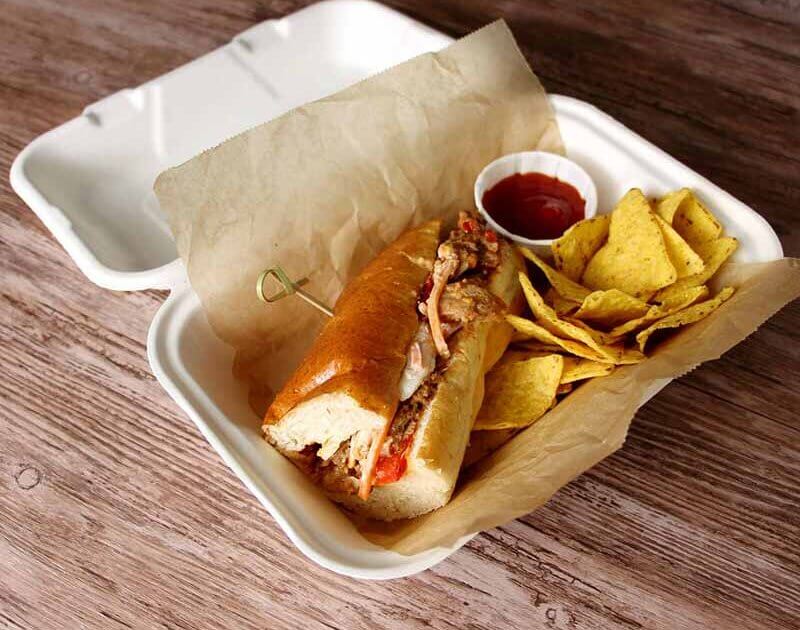
Restaurants and cafes: Sustainable to-go options
Sugarcane clamshell containers offer an excellent solution for restaurants and cafes that provide takeout or delivery services. These containers can securely hold a variety of food items, from sandwiches and wraps to salads and hot meals. The biodegradability and compostability of sugarcane-based packaging ensure that customers can enjoy their meals without contributing to plastic waste. By using sugarcane clamshell containers, restaurants and cafes can align with sustainable practices and provide eco-friendly to-go options to their customers.
Food trucks and fast-food chains: Convenience meets eco-consciousness
Food trucks and fast-food chains often require efficient and convenient packaging solutions. Sugarcane clamshell containers provide just that. With their functional design and versatility, these containers are suitable for various fast-food and street food options. They can safely hold burgers, fries, tacos, and other popular items, keeping them fresh and intact. The use of sugarcane clamshell containers enables food trucks and fast-food chains to offer quick service while minimizing their environmental footprint.
Grocery stores and supermarkets: Promoting green shopping habits
Sugarcane clamshell containers have applications beyond food service. Grocery stores and supermarkets can utilize these containers for packaging loose produce items such as berries, cherry tomatoes, or nuts. This eliminates the need for single-use plastic bags or containers and encourages customers to adopt green shopping habits. The compostable nature of sugarcane-based packaging ensures that customers can dispose of them along with organic waste, further promoting a sustainable shopping experience.
Fresh produce suppliers and salad bars: Maintaining freshness and quality
Fresh produce suppliers, as well as salad bars, can benefit from the use of sugarcane clamshell containers. These containers provide an effective means of packaging and displaying fruits, vegetables, and salads while maintaining their freshness and quality. The breathable properties of sugarcane-based packaging allow for proper air circulation, preventing moisture buildup and extending the shelf life of perishable items. Customers can enjoy the convenience of ready-to-eat salads and produce while appreciating the sustainable packaging choice.
Bakeries and pastry shops: Combining sustainability and delectable treats
Bakeries and pastry shops can showcase their delectable treats in sugarcane clamshell containers. These containers are ideal for holding pastries, cookies, cupcakes, and other baked goods, allowing customers to transport their purchases easily. The eco-friendly nature of the packaging aligns with the values of conscious consumers who seek sustainable options. By opting for sugarcane clamshell containers, bakeries and pastry shops can enhance their brand image while contributing to waste reduction efforts.
Electronics retailers and beauty products: Expanding sustainable packaging options
Beyond the food industry, sugarcane clamshell containers can find applications in electronics retail and beauty product packaging. They can be used to safely package small electronic devices, accessories, or beauty products. By adopting sustainable packaging options, retailers in these industries can cater to eco-conscious customers and contribute to reducing the environmental impact of their products.
Manufacturing and Supply Chain Considerations
The manufacturing and supply chain of sugarcane clamshell containers require sustainable sourcing, responsible practices, and community engagement. This ensures ethical production, minimal environmental impact, and economic benefits for local communities.
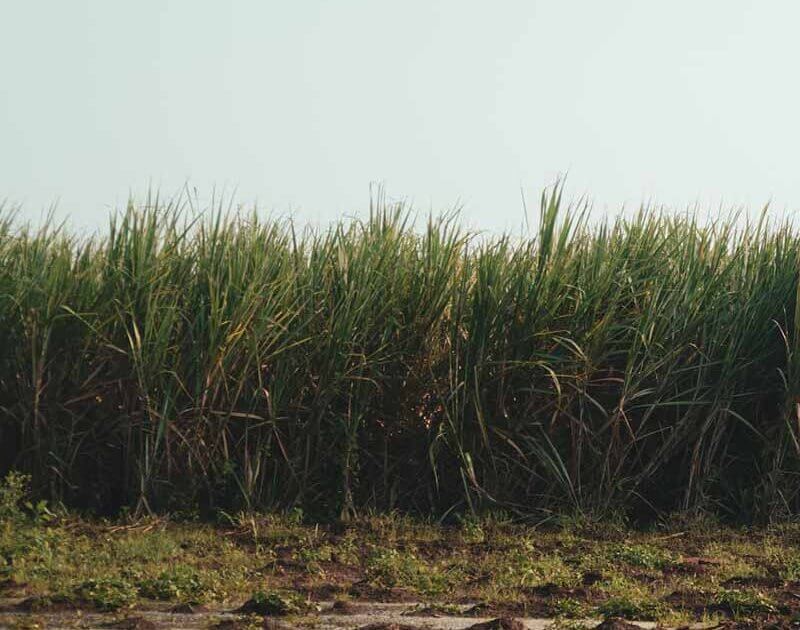
Sustainable sourcing of sugarcane fiber and bagasse
To ensure the sustainability of sugarcane clamshell containers, it is crucial to focus on the sourcing of sugarcane fiber and bagasse. Sustainable practices in this regard involve:
Responsible agricultural practices: Sugarcane should be cultivated using environmentally friendly agricultural practices, such as minimal pesticide and fertilizer use, proper irrigation management, and soil conservation techniques. These practices help preserve soil health, reduce water usage, and minimize the impact on surrounding ecosystems.
Certification and traceability: Suppliers should obtain certifications that ensure responsible sourcing practices, such as certifications from sustainable agriculture programs or forest stewardship councils. Traceability systems can also be implemented to track the origin of the sugarcane fiber and bagasse, ensuring transparency and accountability in the supply chain.
Collaboration with local communities: Engaging with local communities involved in sugarcane cultivation is essential. Collaborative efforts can include fair trade practices, providing education and training on sustainable agricultural methods, and supporting initiatives that promote social and economic development within the communities.
By focusing on sustainable sourcing practices, the production of sugarcane fiber and bagasse can have a positive impact on the environment and local communities.
Manufacturing process of sugarcane clamshell containers
The manufacturing process of sugarcane clamshell containers typically involves the following steps:
Harvesting and processing sugarcane: Sugarcane is harvested and processed for sugar production. During this process, the fibrous residue, known as bagasse, is collected.
Bagasse preparation: The bagasse is cleaned, washed, and undergoes further processing to remove impurities and separate the fibers.
Fiber extraction and pulping: The bagasse fibers are extracted and turned into a pulp using mechanical or chemical processes. The pulp may undergo additional treatments to improve its properties, such as bleaching or refining.
Molding and shaping: The pulp is then molded and shaped into the desired form of the clamshell containers using heat and pressure. The containers can be customized with compartments, lids, or other features as required.
Drying and finishing: The molded containers are dried to remove excess moisture. They may also undergo additional finishing processes, such as trimming or surface treatment, to enhance their appearance and functionality.
Quality control and packaging: The finished sugarcane clamshell containers go through quality control measures to ensure they meet the required standards. They are then packaged and prepared for distribution.
Supply chain considerations and impact on local communities
The supply chain of sugarcane clamshell containers involves several stakeholders, including sugarcane farmers, manufacturers, distributors, and end-users. It is essential to consider the impact on local communities throughout this supply chain:
Economic opportunities: The production and demand for sugarcane clamshell containers can create economic opportunities for sugarcane farmers, manufacturers, and distributors. By supporting fair trade practices and providing fair wages, the supply chain can contribute to the livelihoods and economic development of local communities.
Employment and labor conditions: Manufacturers should prioritize fair labor practices, ensuring safe working conditions and fair wages for workers involved in the production of sugarcane clamshell containers. This includes adhering to labor laws and regulations, promoting a positive work environment, and respecting workers’ rights.
Environmental stewardship: The supply chain should focus on minimizing the environmental impact throughout the manufacturing and distribution processes. This includes efficient use of resources, waste management practices, and responsible transportation methods to reduce carbon emissions.
Collaboration and community engagement: Collaboration with local communities is vital to understanding their needs, concerns, and aspirations. Engaging with community organizations, conducting regular consultations, and supporting community development initiatives can foster positive relationships and ensure that the supply chain benefits local communities.
By considering these supply chain aspects and their impact on local communities, the production and distribution of sugarcane clamshell containers can contribute to sustainable development, economic growth, and social well-being.
Overcoming Challenges and Adoption in Industries
To ensure economic viability, cost challenges of sugarcane clamshell containers can be overcome through scale economies, technological advancements, and collaborations. Educating businesses and consumers about benefits drives adoption. Success stories include Sweetgreen, Chipotle, and Stanford University.

Addressing cost considerations and economic viability
One of the key challenges in adopting sugarcane clamshell containers is addressing cost considerations and ensuring their economic viability. Here are some strategies to overcome this challenge:
Economies of scale: Increasing demand and production volumes can lead to economies of scale, resulting in cost reductions. As the adoption of sugarcane clamshell containers grows and becomes more widespread, the costs of production, sourcing, and distribution can decrease, making them more economically competitive.
Technological advancements: Advancements in manufacturing technologies and processes can improve efficiency and reduce production costs. Investments in research and development can lead to innovations that optimize the production of sugarcane-based packaging, making it more cost-effective.
Collaboration and partnerships: Collaborating with suppliers, manufacturers, and other stakeholders can help optimize supply chains, streamline processes, and reduce costs. By working together, businesses can identify opportunities for cost savings and explore innovative solutions that benefit all parties involved.
Educating businesses and consumers about the benefits
To drive adoption of sugarcane clamshell containers, it is important to educate businesses and consumers about their benefits. Here are some approaches to increase awareness:
Highlighting environmental advantages: Emphasize the positive environmental impact of using sugarcane clamshell containers, such as their biodegradability, compostability, and reduction of plastic waste. Communicate the importance of sustainable packaging in combating environmental challenges and showcase how these containers align with sustainability goals.
Demonstrating functional and practical features: Showcase the functional and practical aspects of sugarcane clamshell containers, such as their durability, insulation properties, and compatibility with various food types. Highlight how these containers meet the needs of businesses and consumers while also being environmentally friendly.
Providing educational resources: Develop educational resources, such as brochures, online content, and workshops, to inform businesses and consumers about the benefits and proper usage of sugarcane clamshell containers. Offer guidance on disposal methods, composting, and the broader impact of sustainable packaging choices.
Success stories and case studies of businesses adopting sugarcane clamshell containers
Sweetgreen: This popular salad chain is committed to sustainability and uses Sugarcane clamshell containers for their to-go orders. They prioritize fresh, locally sourced ingredients and eco-friendly packaging, offering customers a guilt-free dining experience.
Chipotle Mexican Grill: Chipotle has been a leader in sustainable practices, including their packaging choices. They have incorporated Sugarcane clamshell containers, demonstrating their dedication to reducing plastic waste and promoting environmentally responsible dining.
Stanford University: Stanford University’s dining services have transitioned to using Sugarcane clamshell containers in their various dining halls and on-campus eateries. By incorporating these eco-friendly containers, Stanford promotes sustainable practices and encourages students to make environmentally conscious choices.
Consumer Perspective and Environmental Impact
Growing demand for sustainable packaging from conscious consumers drives the adoption of sugarcane clamshell containers. These containers reduce plastic waste, promote a circular economy, and encourage environmentally responsible choices, shaping consumer behavior towards sustainability.

Growing demand for sustainable packaging from conscious consumers
In recent years, there has been a significant increase in consumer awareness and demand for sustainable packaging options. Conscious consumers are increasingly seeking products that align with their environmental values. Sugarcane clamshell containers, being eco-friendly and biodegradable, cater to this growing demand. Businesses that offer sustainable packaging options like these containers can attract and retain environmentally conscious customers who prioritize sustainable choices.
Reducing plastic waste and promoting a circular economy
Plastic waste is a pressing environmental issue, and reducing its impact is crucial. Sugarcane clamshell containers offer a sustainable alternative to traditional plastic packaging. By opting for these containers, businesses can contribute to the reduction of plastic waste. Furthermore, sugarcane-based packaging supports the concept of a circular economy. As these containers are biodegradable and compostable, they can be effectively recycled into organic matter, contributing to the creation of nutrient-rich compost. This closed-loop system helps reduce the reliance on single-use plastics and minimizes environmental pollution.
Encouraging environmentally responsible choices
The adoption of sugarcane clamshell containers encourages consumers to make environmentally responsible choices. By providing these eco-friendly options, businesses empower consumers to select packaging that aligns with their values. The use of sugarcane-based packaging serves as a visual reminder of the importance of sustainable practices, inspiring individuals to consider the environmental impact of their choices. Additionally, businesses can educate consumers about proper disposal methods and the benefits of composting, fostering a sense of responsibility and promoting a more sustainable lifestyle.
The consumer perspective and the environmental impact of adopting sugarcane clamshell containers go hand in hand. As conscious consumers increasingly demand sustainable packaging options, businesses that respond to this demand not only contribute to reducing plastic waste but also play an active role in shaping consumer behavior towards more environmentally responsible choices.
Collaborative Efforts and Future Outlook
Collaborative efforts, technological advancements, and awareness initiatives shape the future of sustainable packaging. Industry partnerships, government support, and consumer demand drive change. Advancements in materials, design, and recycling technologies pave the way for greener solutions.

Industry collaborations and initiatives for sustainable packaging solutions
Addressing the environmental challenges posed by packaging requires collaborative efforts from various stakeholders in the industry. Some key collaborative initiatives include:
Industry partnerships: Businesses can collaborate with packaging manufacturers, suppliers, and other industry players to develop and promote sustainable packaging solutions. This collaboration can involve sharing best practices, conducting joint research and development projects, and collectively advocating for sustainable packaging standards.
Government and regulatory support: Governments can play a crucial role by implementing regulations and incentives that encourage the adoption of sustainable packaging. Collaboration between businesses and government entities can lead to the formulation of policies and initiatives that support sustainable packaging practices.
Non-profit organizations and industry associations: Non-profit organizations and industry associations dedicated to sustainability can provide guidance, resources, and platforms for knowledge sharing. These organizations can foster collaboration among businesses and advocate for sustainable packaging practices on a larger scale.
By joining forces through collaborations and initiatives, businesses can pool their expertise, resources, and influence to drive meaningful change and accelerate the adoption of sustainable packaging solutions.
Technological advancements and future developments
Technological advancements continue to play a vital role in shaping the future of sustainable packaging. Some areas of focus for future developments include:
Alternative materials: Research and development efforts are exploring alternative materials derived from renewable sources or waste streams that can be used as packaging solutions. This includes exploring innovative materials such as plant-based plastics, biopolymers, and bio-based composites that offer similar or improved properties compared to conventional packaging materials.
Improved packaging design: Advancements in packaging design can lead to innovations that enhance functionality, durability, and recyclability. This includes designing packaging that is easy to separate and recycle, incorporating smart packaging technologies to extend product shelf life, and exploring new packaging formats that minimize material usage.
Recycling and waste management technologies: Developing improved recycling and waste management technologies can enhance the circularity of packaging materials. This includes advancements in sorting, processing, and recycling infrastructure to ensure efficient and effective recycling of packaging waste.
Encouraging businesses and individuals to embrace green solutions
Encouraging businesses and individuals to embrace green solutions requires a multi-faceted approach:
Awareness and education: Businesses and individuals need to be aware of the environmental impact of packaging and the benefits of sustainable alternatives. Education and awareness campaigns can provide information about the importance of sustainable packaging and empower businesses and individuals to make informed choices.
Incentives and support: Governments and organizations can provide incentives and support programs to encourage businesses to adopt sustainable packaging practices. This can include financial incentives, grants, and access to resources and expertise.
Consumer demand: Continued consumer demand for sustainable products and packaging can drive businesses to prioritize sustainability. Consumer education and advocacy play a crucial role in creating a market demand for green solutions.
By combining awareness, incentives, and consumer demand, businesses and individuals can be motivated to embrace green solutions and make sustainable choices in packaging.
The versatility, sustainability, and eco-friendly nature of Sugarcane clamshell containers make them an ideal choice for businesses and individuals striving to make a positive impact on the environment. By opting for these innovative containers, we can reduce our reliance on traditional plastic packaging, minimize waste, and contribute to a greener future. As we conclude our exploration of Sugarcane clamshell containers, we invite you to join us at Eco March in embracing sustainable alternatives. Together, let’s make a conscious choice for the planet, support environmentally friendly solutions, and create a brighter, cleaner world for generations to come.
Want to know more research about the sugarcane containers market? Transparency Market Research provides you with more viewpoints.
John Q
John Q is Eco March’s Product Manager. With 5 years of prior experience in the food industry after graduating from university, he has been an integral part of Eco March. He excels in creating and developing eco-friendly food packaging products with a keen focus on enhancing the consumer experience.
Latest Products
Contact Us
Phone: +86 1358 4476 870
WhatsApp: +86 1358 4476 870
Email: info@ecomarch.com
Address: No.1179, TangShi Road, YangShe Town, ZhangJiaGang City, Jiangsu Province, China

